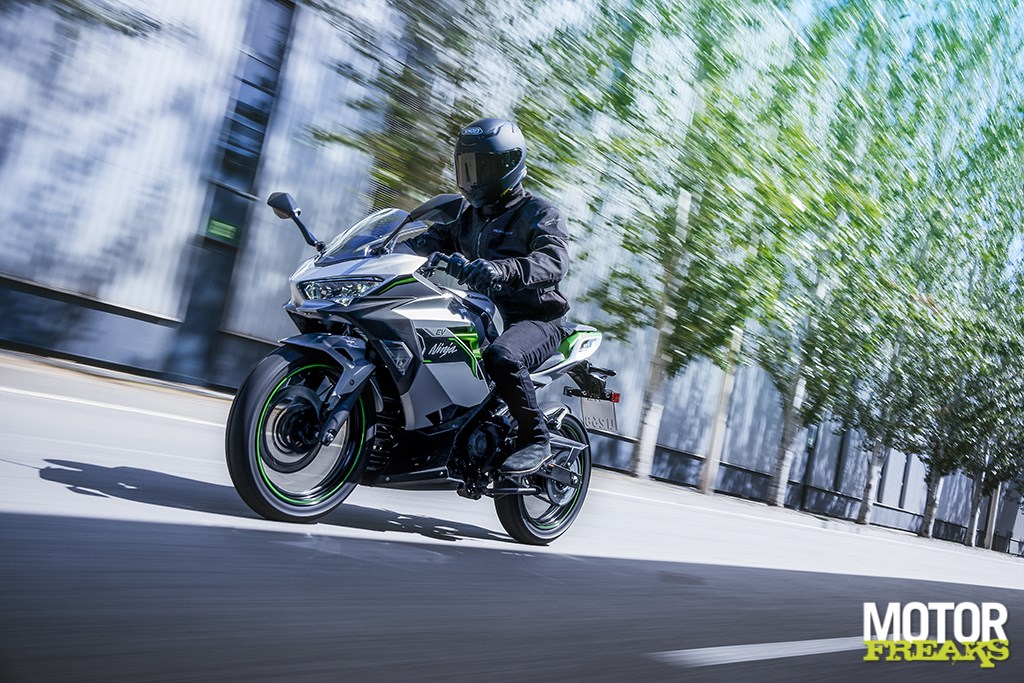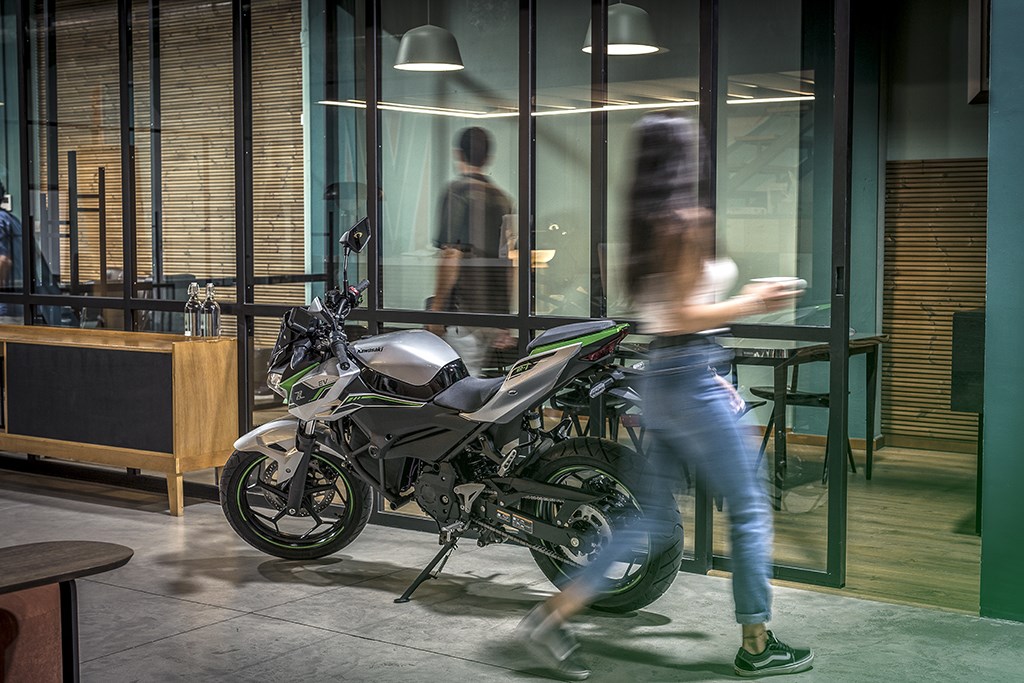After announcing the models at the EICMA in Milan last year, Kawasaki has now released the technical information of their first EV fully electric models: the Ninja-e1 and the Z-e1. The two EVs are the first result of the “Go with Green Power” plan that was unfolded by ehh… Team Green at that EICMA.

With the launch of the Z and Ninja EV, Kawasaki is focusing on urban transportation, which is completely understandable. The problem of exhaust fumes is the greatest in cities and in addition, short distances are mainly covered in urban environments, so the lack of range of an EV compared to a combustion engine is not an issue at all.
According to Kawasaki, the Z-e1 and Ninja-e1 have mature frame and engine specifications that match the A1 class for which they are intended and that “couple the typical Kawasaki riding fun with a zero-emissions future.” End quote. In other words, two EV models that are at the level of the current 125cc models in terms of performance.
With that difference, the two EV models will probably outperform their 125cc equivalents in terms of acceleration, for the simple fact that an electric motor has a constant torque and you therefore always have the maximum torque at your disposal. Unless it is electronically limited to prevent too much force on the drivetrain, but then again…
Both models are powered by a brushless motor with a continuous power of 5kW and a usable peak power of 9kW, which get their punch from what Kawasaki calls an innovative battery solution, where the dual, removable batteries are connected in parallel.




According to Team Green, the batteries can be charged more efficiently than the competition. This dual battery configuration allows for a wide variety of charging options because the two separate batteries are individually more portable than a single, much heavier battery.
The new EV models are “Twist and Go”, and therefore function without a clutch or gears. The driving pleasure is enhanced by some smart, rider-focused features such as two riding modes (Road and Eco) and an exciting “e-boost” option. This boost briefly provides a power output of 9kW, allowing rapid acceleration and a potential top speed of 99 km/h.
The e-boost function is activated via a button on the right handlebar, under the “throttle grip”. Another useful feature is the walking mode. This allows you to move the machine forward or backward at a walking pace, which is especially useful for tight parking spaces or when you have to climb a slope.
Externally, the unique Metallic Bright Silver and Metallic Matte Lime Green finish – the signature livery of future Kawasaki EV models – must have given a chic and sporty appearance. At least, that’s what Kawasaki hopes to have achieved.

From the saddle you have a view of a TFT display with smartphone connectivity. This display shows things such as the driving status of the machine, the range, the availability of the boost function and the selected driving modes (Road or Eco). According to the green boys, the TFT display fits seamlessly with the user-friendly throttle, ABS brakes and the lattice tube frame, as you find on larger 400cc machines.
Charging options include a docking station, which can accommodate one battery, or a cable, which allows the external charger to be connected to the batteries still in the bike via a socket under the seat. Useful features of the advanced Li-Ion batteries include built-in charging indicators and the symmetrical design, which allows easier installation of the batteries in the engine. In addition, the EVs offer a handy, lockable storage space above the batteries, under the battery cover.
With a range of accessories including +30mm Ergo-Fit saddles and various loading solutions, the naked Kawasaki Z-e1 and the sporty, sleek Kawasaki Ninja-e1 models herald and open a new chapter in the company’s glorious history the door to a greener future for two-wheel fans worldwide.

Pricing and availability will be announced later this year.
– Thanks for information from Motorfreaks.